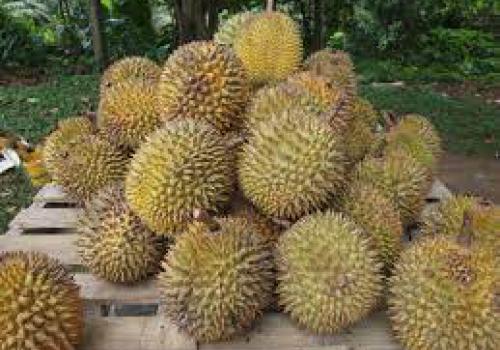Thailand, with its abundant fruits, is known in China as the "Kingdom of Fruits”. Durian, a fruit produced in Thailand known as the "King of Fruits", is sought after by Chinese consumers. According to the Department of Trade Negotiations (DTN) of Thailand, thanks to the Free Trade Agreement between the two countries, durians from Thailand are still the leader in the Chinese market. The Director-General of DTN said that in the first quarter of this year, durian exports to China from Thailand amounted to 5.8 billion baht (US$186 million), showing a year-on-year increase of 14%. Last year, durian exports to China were US$1.5 billion, showing an increase of 78% over 2019. Yu Haiqiu, Director and Researcher of the Thailand Institute of the China (Kunming) Institute of South and Southeast Asia, said that in recent years, Chinese consumers’ love for durians has grown. In the shops that specialize in imported fruits, durians are the top-selling product; Among the various bakery products, durian flavored products are the most expensive and the most popular. Although many countries in Southeast Asia produce durians, to most Chinese consumers, the country that comes to their mind when thinking of durians is Thailand. There are many varieties in Thailand, but Chinese consumers are most familiar with MonThong.
In recent years, there has been an increasing supply on the Chinese market and their prices have soared. The price of a general-grade MonThong durian generally costs about 200 yuan per half a kilo. According to industry analysts, there are a few reasons for the increase in prices. First, the number of people willing to taste durian, a fruit with a unique smell, is increasing, and the number of repeat customers is also increasing. Secondly, farm gate prices continued to rise. Although Thailand has expanded its planted area in recent years, it usually takes 5-6 years for trees to bear fruit, and the market is currently in short supply. Moreover, there are more and more products that use durian as an ingredient, making the shortage of fresh fruit more prominent. In the past, when fresh durians were on the market, consumers had access to them but for a limited time. Now, the variety of durian products makes up for this. Processing technologies such as freeze-dry have been continuously improved so that dried fruit can also retain the flavor.
Although durian prices keep rising and durians from other Southeast Asian countries have also made their way into the Chinese market, Thai durians still remain the No.1 spot. Yu Haiqiu said that if Thai fruit traders want to further strengthen their ties with the Chinese market, they need to pay attention to several issues. Firstly, they need to ensure quality. During the growing process, they need to pay attention to environmental protection, and should not use chemical fertilizers, oxytocins, and ripening agents against the regulations. Secondly, they need to ensure that the entire process complies with international laws and regulations, such as the use of labor. "Of course, the Chinese market should also have a sensible consumer attitude towards Thai durians and not blindly raise farm gate prices.” Yu Haiqiu pointed out. According to the Vice President and Secretary-General of the China-Thailand Chamber of Commerce, Thai durians account for more than 90% of the market share of all imported durians, making China the largest export market for Thai durians. Thai fruits are mainly imported through southern China, especially the Guangdong market, followed by markets such as the Yangtze River Basin and Shandong.
